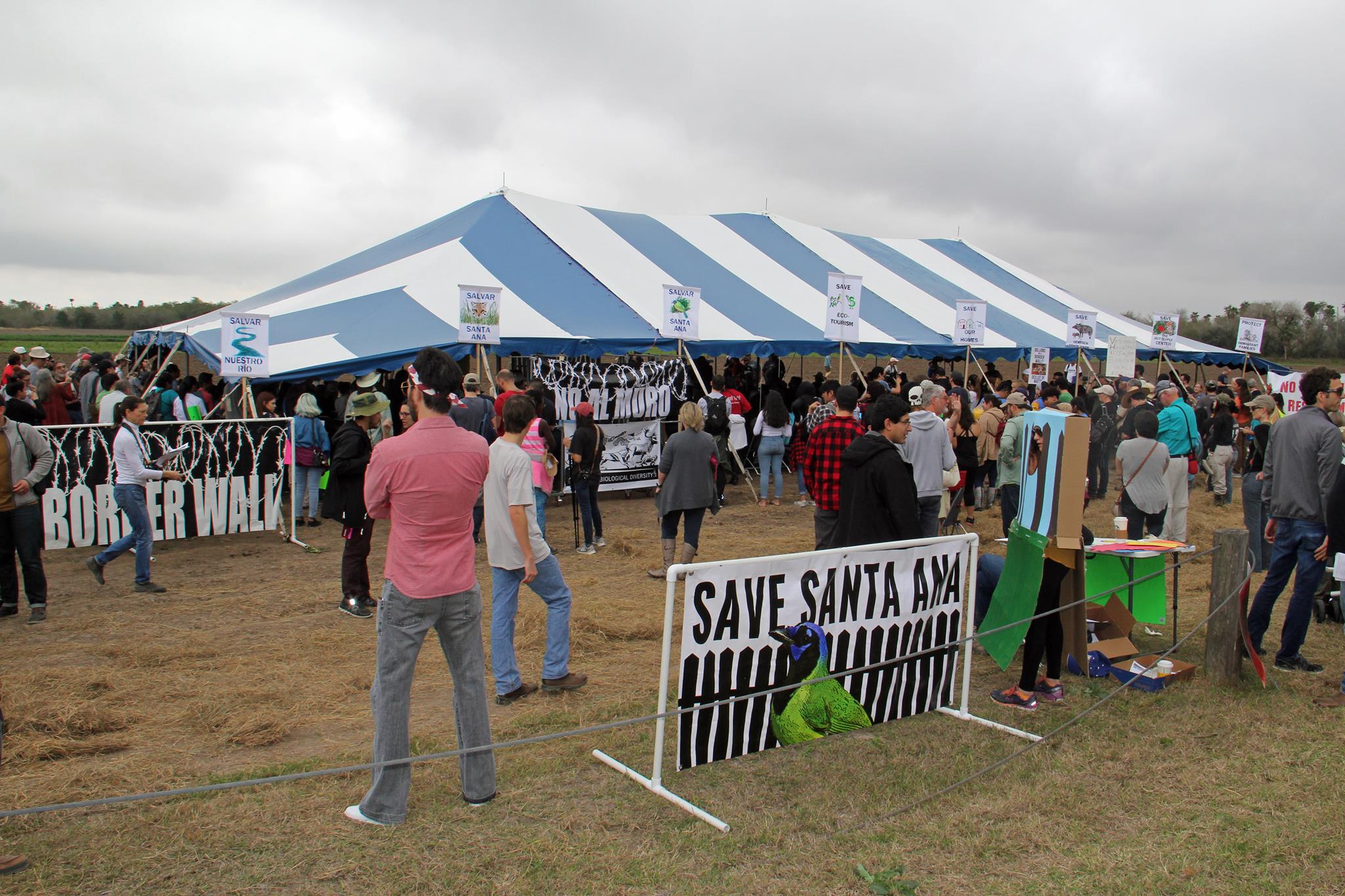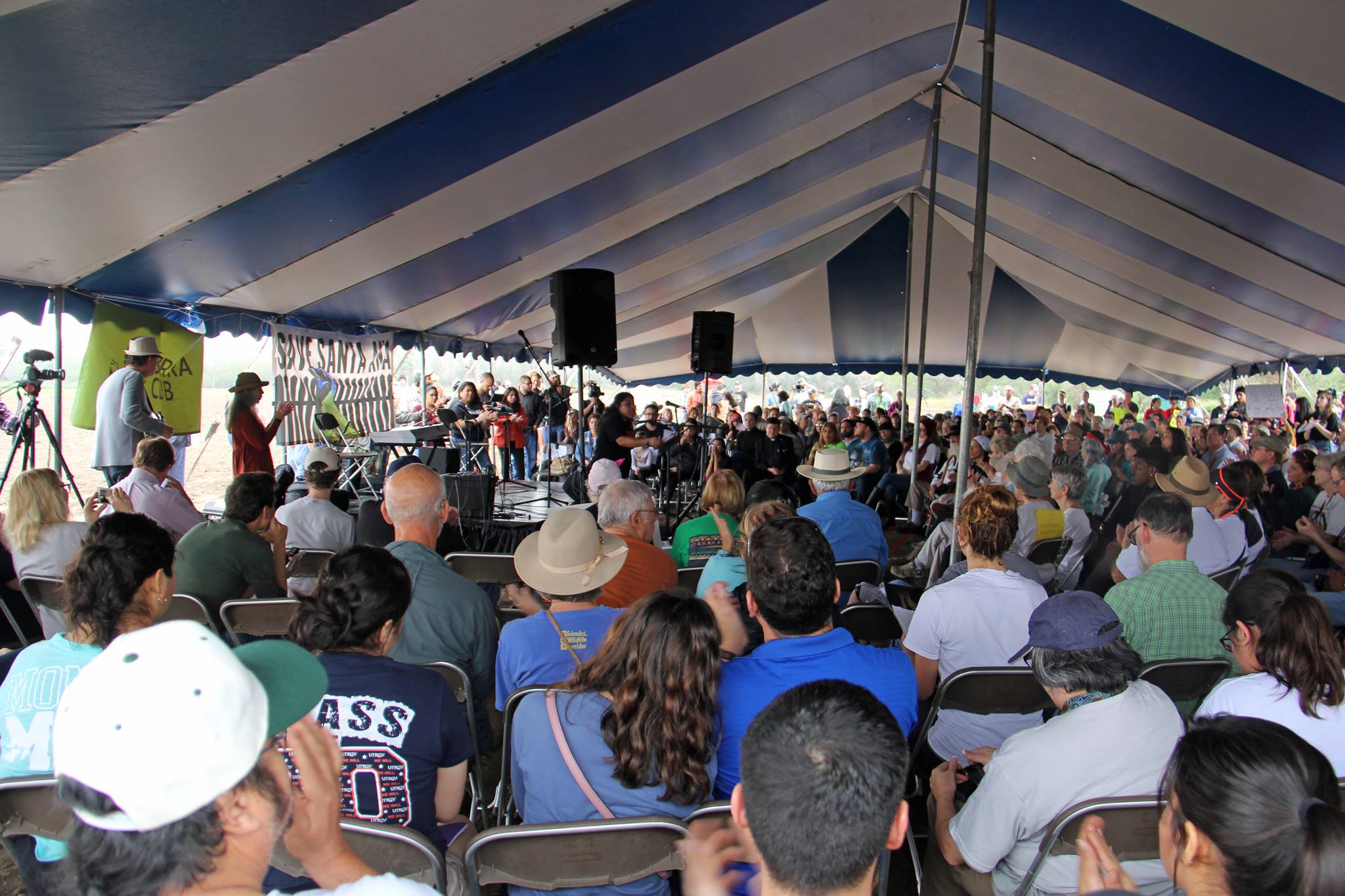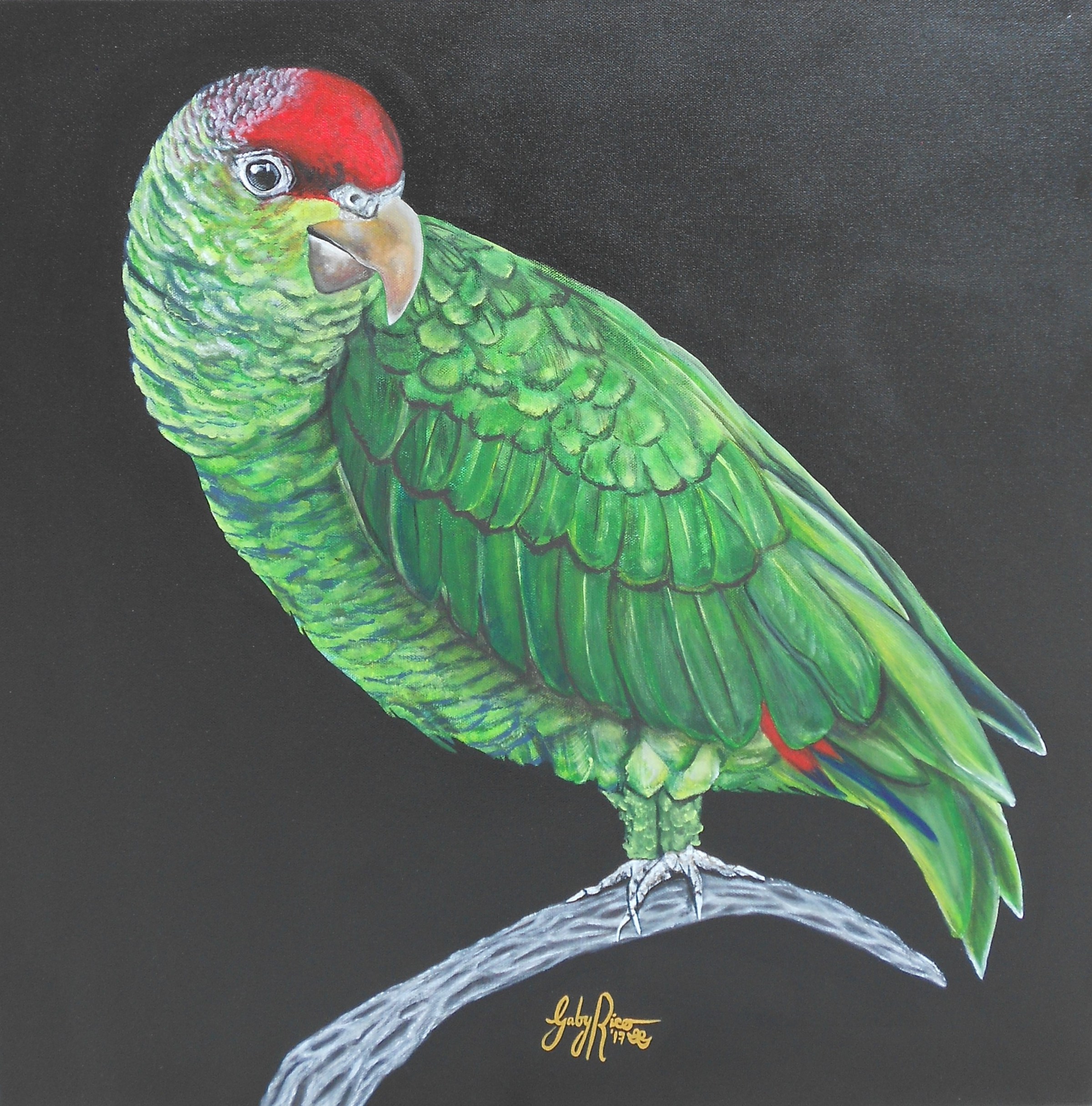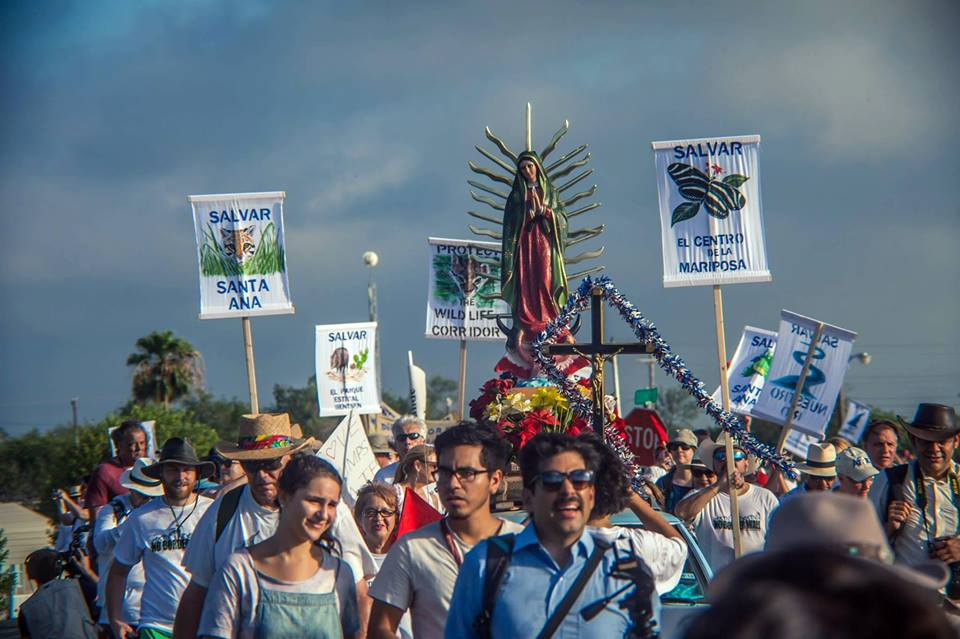In the Rio Grande Valley, the mobilization against Trump’s campaign promise of a border wall persists. The need to pass a Clean Dream Act in DC is urgent, a bill that doesn’t push forth billions of dollars towards a border wall and increased militarization, deportations, and surveillance in exchange for a pathway to citizenship for Dreamers.
The message from those directly impacted by anti-immigrant legislation is loud and clear: No compromise.
But as the months pass and people around Texas and the nation hear news updates about the latest status of political squabbling in DC, we wanted to center the perspective of our Rio Grande Valley volunteers, friends, co-workers, and activists that have been working around-the-clock to make their voices heard.
To them, the No Border Wall campaign isn't just “close to home.” It is home.
Jackelin Treviño is a RGV activist and Sierra Club volunteer who has been collaborating with a team of volunteers and other allies to mobilize against the human rights and environmental disaster that is the border wall.

Here are her reflections on the Valley’s latest large-scale mobilization on January 27 (on the 75th anniversary of the Santa Ana Wildlife Refuge), the exhaustion and hope that accompanies organizing against the border wall, and a beautiful description of what the Rio Grande Valley means to her:
Is there a specific moment, speaker, conversation, song, dance, that stood out to you during the 1/27 Stop The Wall, Save Santa Ana event? Feel free to share more than one.
One moment that was so sweet was when I ran into the parents of my childhood best friend! I had not seen them in probably 18 years or more. Her dad took a picture with me to send to her!
The other thing that really sticks out is how well everyone worked together as a team. We had a team of about 40 volunteers each playing a role. One of my former colleagues came down (Sissy Yado, she is from here) and helped us manage the media check in table, which allowed us to connect local people of color to the media to serve as spokespeople. It was amazing to see a row of cameras and our own community in front of them speaking truth to power.
 Photo Credit: Scott Nicol
Photo Credit: Scott Nicol
In our debrief, we were discussing the media management of the event and debating what worked and what did not work, and a Mexican American elder who was new to meetings shared (his word was the last, he stayed quiet most of the meeting) that he was so proud to see people of color in front of the media and it was about time. That made me feel so honored to have helped create that shift.
Additional moment: My friend Stevie read a poem she wrote about a migrant woman whose loved one was missing along the border (Stevie supported this woman in finding her loved one, literally going out to help her find her loved one's body) and I made sure to sit near her and watch her speak. I was kneeling on the floor in front of the stage next to a Catholic priest, and as I cried, he put his hand on my shoulder.
The night before the event at about 9 or 10 pm, I got a call back from Father Roy, who presides over the La Lomita mission where we marched last summer, and he prayed over Amanda (another volunteer and our Emcee) and I as we confirmed on my couch that all was well and we were as ready as we could be.
There were a lot of really special, behind the scenes moments I got to be a part of.
 Photo Credit: Scott Nicol
Photo Credit: Scott Nicol
The Trump administration has been relentless in propagating racist misconceptions about the border and border communities. Though it is not your responsibility to justify your humanity/existence, how would you describe your community to someone who lives far from the Valley and has never visited?
The Rio Grande Valley is a large and beautiful in-between place, where the entire region has grown up and developed in a sense of struggle and intergenerational poverty. We grow up speaking two languages, and knowing that our educator parents used to be farmworkers, knowing that our parents or loved ones still are farmworkers. I have always grown up with an awareness that my life would be completely different if I had been born just a few minutes drive south, and the awareness of how lucky we all are to be in America produces a deep patriotism. The weather is hot and humid most of the time, and tropical flowering plants and palm trees are around everywhere. Whenever I come home from a trip on a plane and smell Valley air for the first time it smells tropical, like a rainforest.
The population of the city where I was born and live is over 100,000 people. There are dozens of cities of all sizes which follow the river all across the Valley. Our cities all share common culture and values. We spend time with those we love; parties and celebrations are common. We hold wedding style celebrations for birthdays, anniversaries, or just because it’s Friday. We have BBQs like other Texans, but likely with more tacos and traditional Mexican foods.
On any given day if [you’re] walking down the road you will hear tejano floating in on the wind, and it always makes me smile. There are lots of areas within our region that look and feel like border towns in Mexico - a bit run down but still happy and thriving and so beautiful.
Most of the people in this region are creative and artistic; the borderlands produce incredible artists. Our local universities and community colleges, cities, and public schools have all been working together to overcome poverty for decades and the results of that work are seen in our communities and our workforce. We have thriving medical and industrial sectors which are providing good paying jobs for local residents and newcomers alike. Small businesses are popping up more and more as my generation begins to shift towards entrepreneurship.
Our local ecosystem is valued and a lot like the people here, shorter than some other trees, thorny, able to get by with little resources, and many produce stunning flowers or attract beautiful butterflies and birds. Parrots hang out on the telephone wires instead of blackbirds in certain parts of the city.
 Local RGV Artist Gaby Rico painted a series of birds that inhabit and migrate to the Santa Ana Wildlife Refuge, illustrating a glimpse at the wildlife devastated by Trump’s border wall.
Local RGV Artist Gaby Rico painted a series of birds that inhabit and migrate to the Santa Ana Wildlife Refuge, illustrating a glimpse at the wildlife devastated by Trump’s border wall.
(You can see the full series on RGV media publication Neta’s site here.)
"On a given day I get to see my parents, walk the streets my grandparents walked, and see friends and loved ones I have known for decades. Because this is home."
El Valle is deeply beautiful. We have rather good air quality so my asthma does not act up too badly when I am here. The beach is only an hour away, so driving out to see a pristine Texas Gulf coastline is something I am deeply thankful for. I have always felt safer walking around the streets down here than I ever did in North Carolina or Washington DC (I’ve lived in both places). What we are NOT: A war zone, a bunch of good-for-nothings, a leech on the system, a threat to anyone. We were literally here first. It is unfortunate we cannot be left in peace.
Another thing I feel is really important for folks to understand is that the Rio Grande River is OUR RIVER, just like the rivers in Austin are integral to the sense of place for those from there.
Imagine the city deciding to wall off the Greenbelt in Austin. That is how this feels. It is excruciating.
Due to the effects of agriculture, industrialization and urbanization, less than 5% of our native ecosystem is left in the ENTIRE valley. Our people, our ecosystem, is not found anywhere else. It is rare, and about 95% of it is gone. What is left of it borders the Rio Grande River, and much of it is part of an intentional wildlife corridor. Trump’s border wall puts it at risk.
This wall project looks and feels like ecological genocide.
What keeps you going?
I am in a deep state of grief, but being around others who also care about what is happening is comforting. It is really important to me that:
1) Those wanting to harm our people and this region understand that the folks who live here are educated and proud and will not take this lying down. We are doing all we can to make our voices heard because we know we exist and deserve dignity. We are demanding that dignity however we can, while finding ways for us to be in community together and make it through this difficult time.
2) Future generations need to know that we, this generation, existed and we’re proud of who we were and fought this project and the complete militarization of our border in every way we could, with everything we had.
 Photo Credit: Lower Rio Grande Valley Sierra Club
Photo Credit: Lower Rio Grande Valley Sierra Club
Dozens of people are working night and day to figure out how we can stop this, and much of what we have done is documented in the press and other elements, like the anti-border wall city resolutions, are part of the historical record now. Future generations who research this time will find those resolutions and know that we tried.
I have complete faith in that. Current mobilization against this border wall, not the first wall built in our community, is laying the groundwork for a future that is ethical and just. In such a future, projects like this don't get any air.